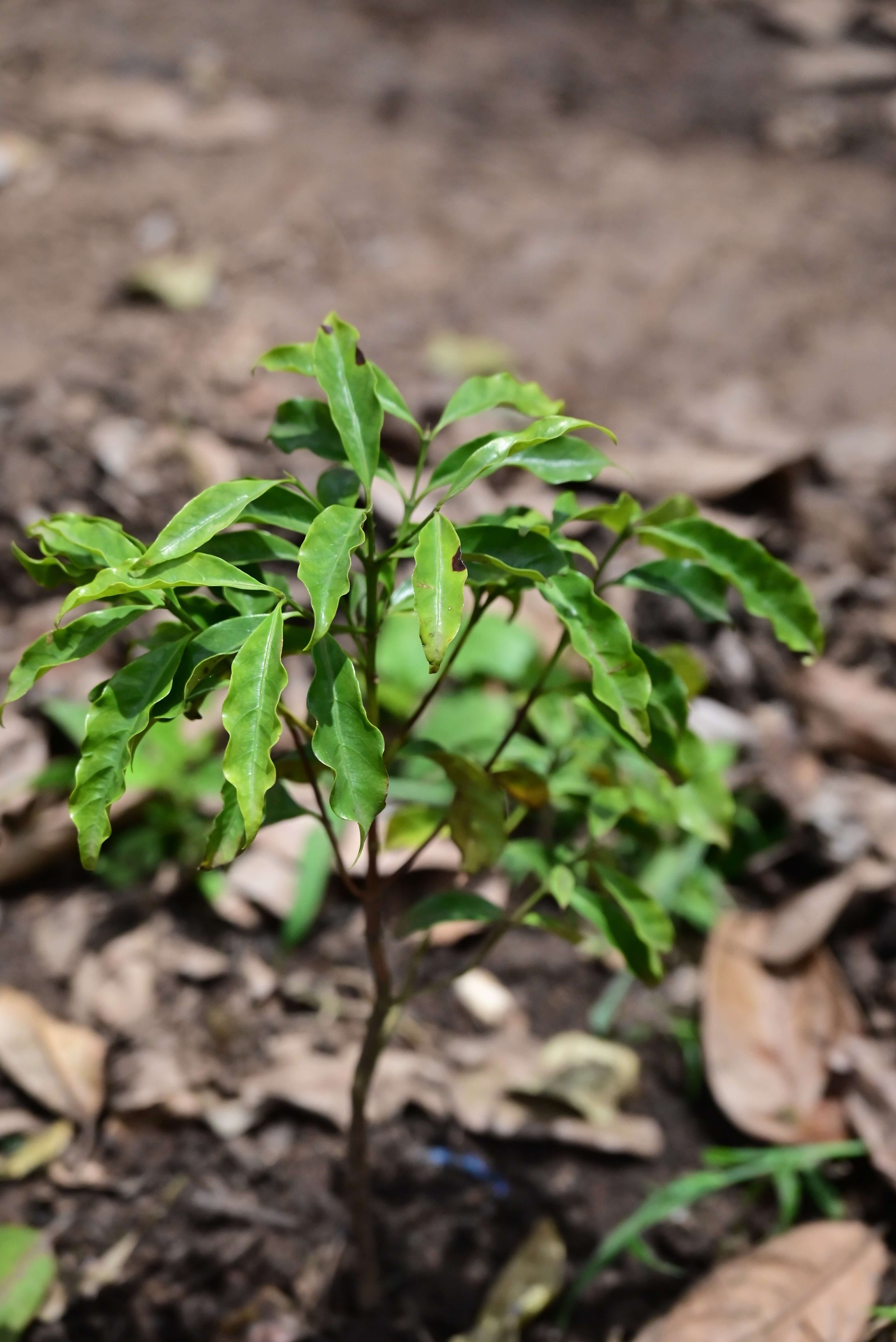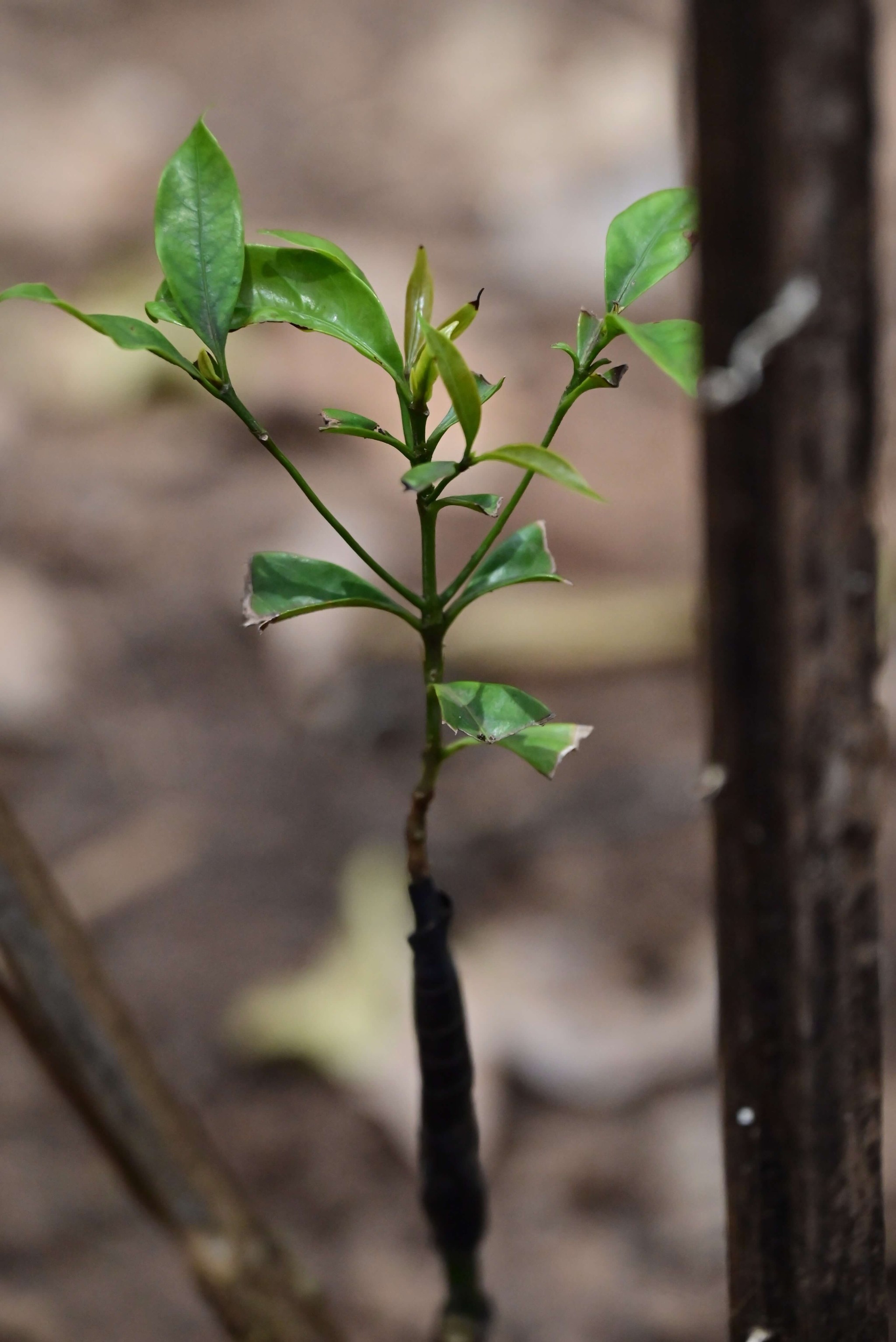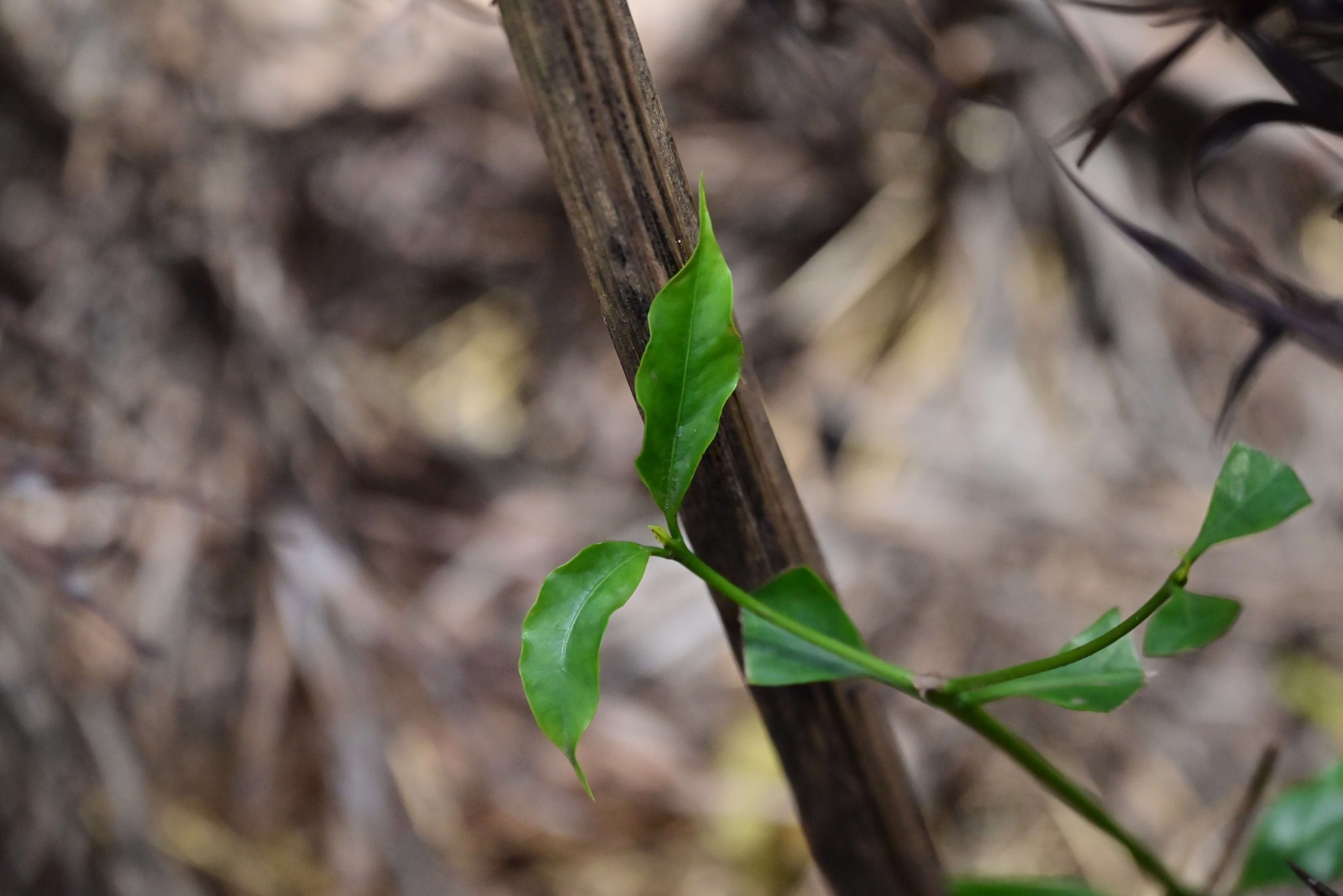Grafting Coffea Eugenioides on Coffea Excelsa

Why Excelsa and Eugenioides
Coffee is a popular beverage that is facing a number of challenges, including climate change, pests and diseases, and soil degradation. Grafting is a horticultural technique that can be used to address these challenges by combining the desirable traits of two different Coffea species.
In this case, grafting can be used to improve the drought resilience of a Coffea eugenioides scion with the rootstock of Coffea excelsa.
Coffea excelsa trees have a deeper and more vigorous root system than Arabica and Robusta plants. This is due to the fact that excelsa trees have a higher root-to-shoot ratio than Arabica and Robusta trees. The deeper root system of excelsa trees allows them to access water and nutrients from deeper in the soil, which makes them more drought tolerant. Additionally, the vigorous root system of excelsa trees makes them more resistant to pests and diseases.
The fact that excelsa is a diploid (2n=22) and eugenioides is also a diploid makes them an excellent pairing for grafting. This is because diploid plants are more stable and have a higher rate of success when grafted together.
The reason why we have chosen to graft eugenioides onto excelsa is because eugenioides is a relatively drought tolerant species that can survive harsher conditions than Arabica or Robusta. We expect the excelsa rootstock to further increase the drought tolerance of eugenioides.
Another reason for trialing the graft is to collect data. Arabica and Robusta have had over 100 years of research put into them, but there is still much that we do not know about the other 120+ Coffea species. By grafting eugenioides onto excelsa, we can collect data on the drought tolerance of this new combination and learn more about the potential of other Coffea species to withstand climate change.

The Graft
The grafting procedure is a relatively simple horticultural technique that can be used to join two plants together. The first step is to select healthy rootstock and scion material. The rootstock is the lower part of the plant, and the scion is the upper part of the plant. The rootstock should be a few inches taller than the scion.
The next step is to make a sloping cut in the rootstock and in the scion. The cuts should be made at a 45-degree angle and should be about the same size.
The rootstock and scion are then joined together. The cut surfaces should be aligned and held together with grafting tape or rubber bands. The graft union should be covered with grafting wax or grafting paint to protect it from the elements.
The grafted plant is then placed in a warm, humid environment. The graft should be kept moist, but not wet.
The success of the graft depends on a number of factors, including the health of the rootstock and scion material, the skill of the grafter, and the environmental conditions. In general, the success rate for grafting coffee is high.
In the case of grafting Coffea eugenioides on Coffea excelsa, the success rate has been very high. This is because both coffee varieties are closely related and have similar growth habits. The graft in the picture is about 2 months old and the plant appears to be healthy.
The mixing and matching of scion and rootstock has the potential to help coffee growers adapt to climate change and other challenges facing the coffee industry. By grafting together different coffee varieties, growers can create plants that are more drought tolerant, disease resistant, and productive.

A little easter egg
A little bit of unrelated but very interesting information, India has its very own eugenioides, the variety know as SLN11 is in reality a eugenioides based tetraploid (4n=44), its a hybrid of eugenioides and possibly liberica, making it a ligenioides(????)
Its a coffee that cups quite well, small bean size and its been propagated in Andhra Pradesh (Araku). It has some fantastic qualities as a low intervention coffee and is pest, disease and drought resistant.
The image is of a SLN11 sapling grafted onto an excelsa root stock (Note this is a tetraploid onto diploid graft)
References
- A.P. Davis, C. Kiwuka, A. Faruk, J. Mulumba, J. Kalema (2023) "A review of the indigenous coffee resources of Uganda and their potential for coffee sector sustainability and development" (https://pubmed.ncbi.nlm.nih.gov/36874918/
- R. Meyers, A. Kawabata, A. Cho, S.T. Nakamoto (2020) "Grafted Coffee Increases Yield and Survivability"
- M. Mishra, A. Slater "Recent Advances in the Genetic Transformation of Coffee" (2012)
- Ligenioides: Coffee Selection 11, Santa Ram (https://santaram09.wordpress.com/2017/12/22/ligenioidesindian-coffee-selection-11/)
